
Our curators selected over 25 annual reports from 2020, to examine how they addressed COVID-19 on their front covers. The selection of reports includes the Americas, Australia, Egypt, Europe, Hong Kong, the Philippines, Russia, and the UK. The reports vary between sectors and include healthcare, education, childcare services and financial institutions. Some are global networks, while others are local organizations.
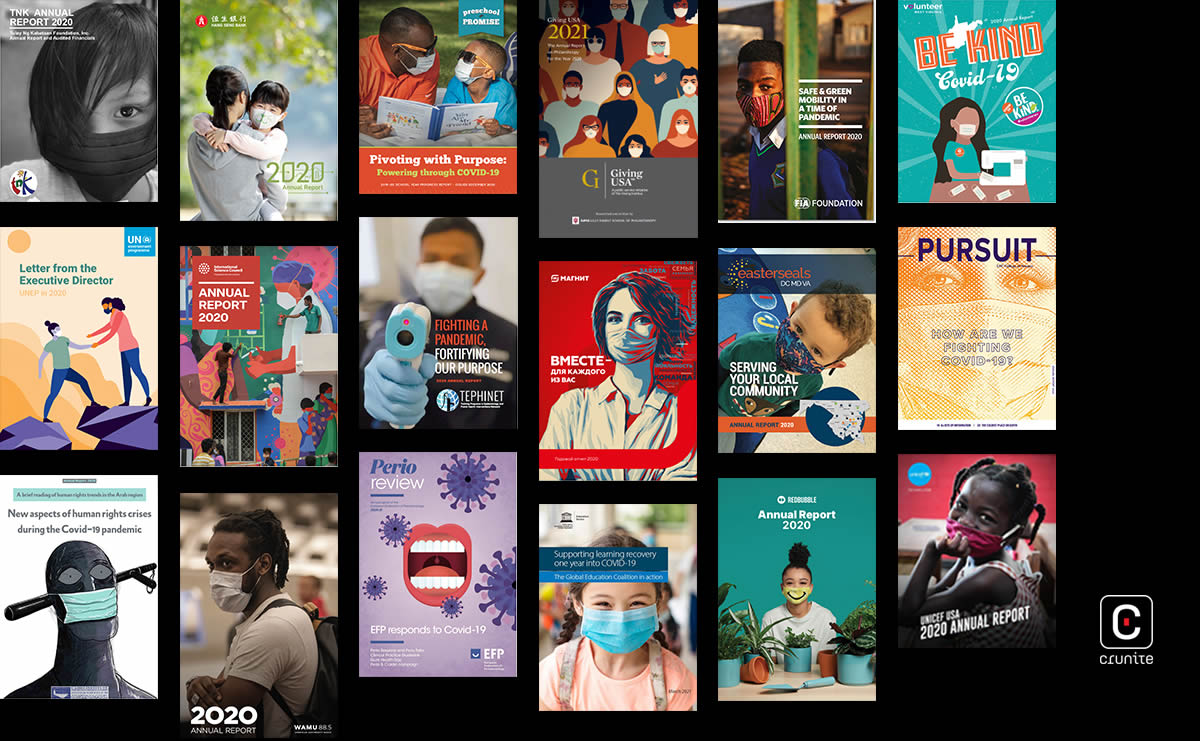
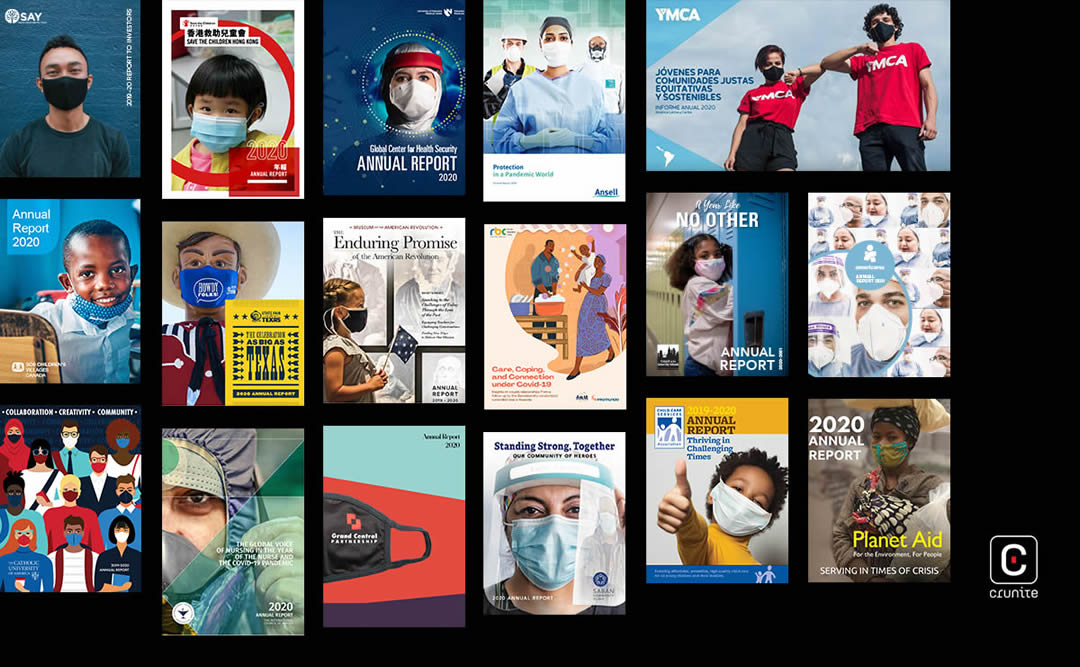
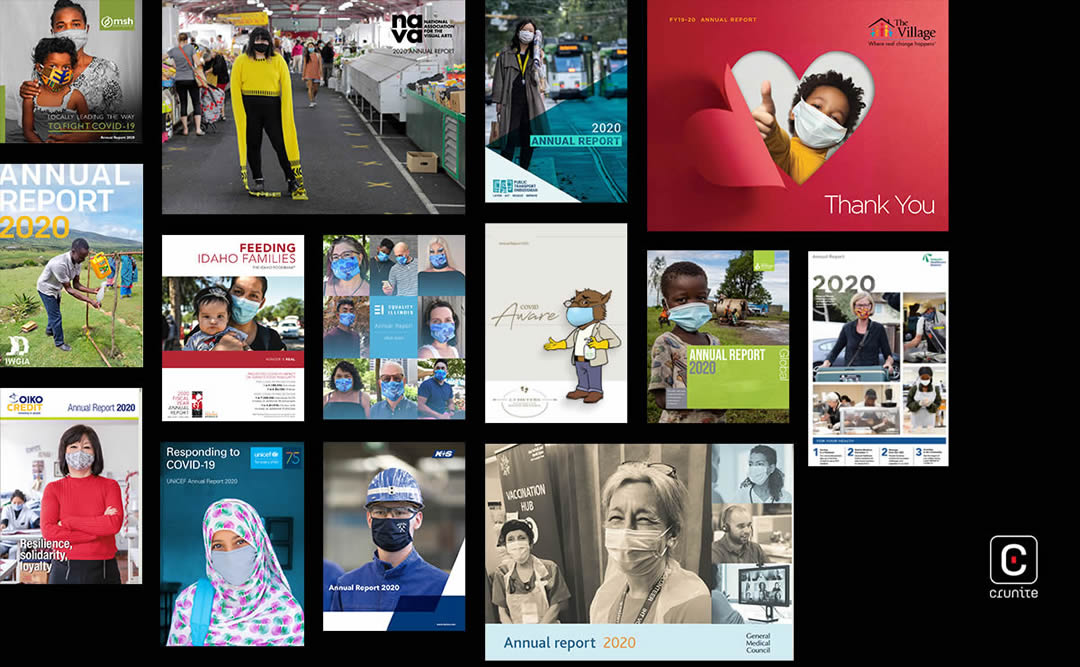
Unsurprisingly, the mask is by far the most recurring motif. For the most part, covers show simple surgical masks – a clear sign of the early days of the pandemic. Covers featuring scientists or doctors tend to show more robust masks and protective gear.
With the mask came a need for us to look more closely at a person’s eyes, eyebrows and forehead to gauge emotion. This is especially true for a photograph. Many of the covers use photography and reading emotion in masked faces from 2020 is a stark reminder of how long the pandemic has lasted.
Again, unsurprisingly, scientists and doctors feature heavily in the covers. A tendency to have the model face the viewer is common. This is true for illustrated covers and photographic ones. These reports want to engage. There is a palpable immediacy in most.
Emotionally, the covers are divided between muted joy and uneasiness (outright fear is avoided by all reports). Reports like IPPF (International Planned Parenthood Federation) and Americares, which show groups of people often try to show a range of emotions, although it is worth noting the Catholic University of America, which has the largest group leans heavily towards the ‘uneasiness’ end of the emotional spectrum.
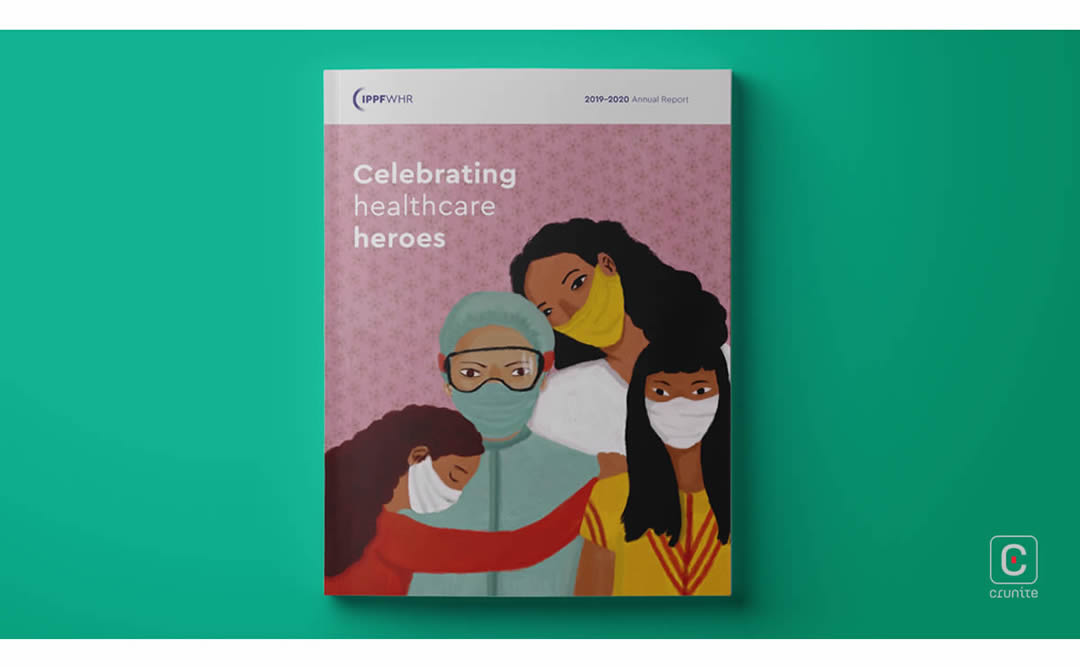
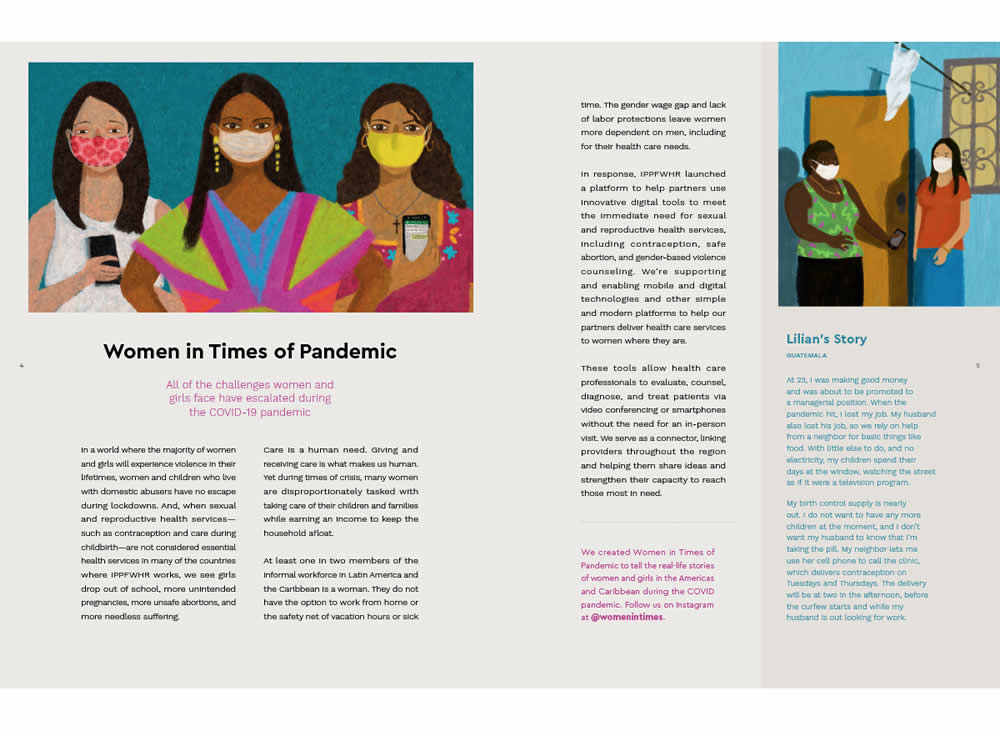
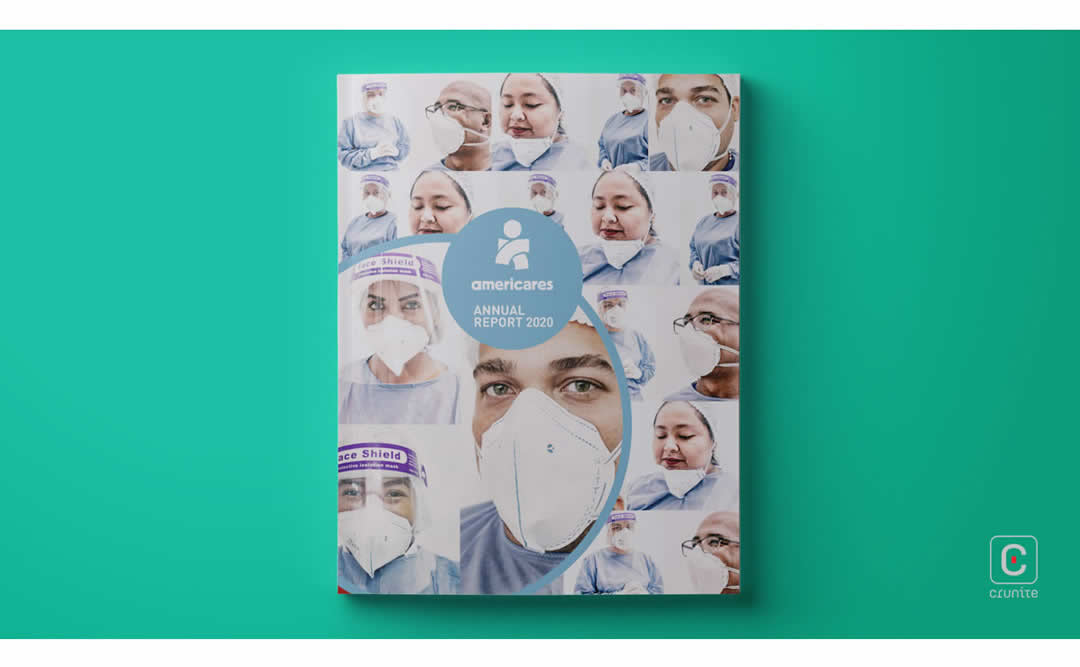
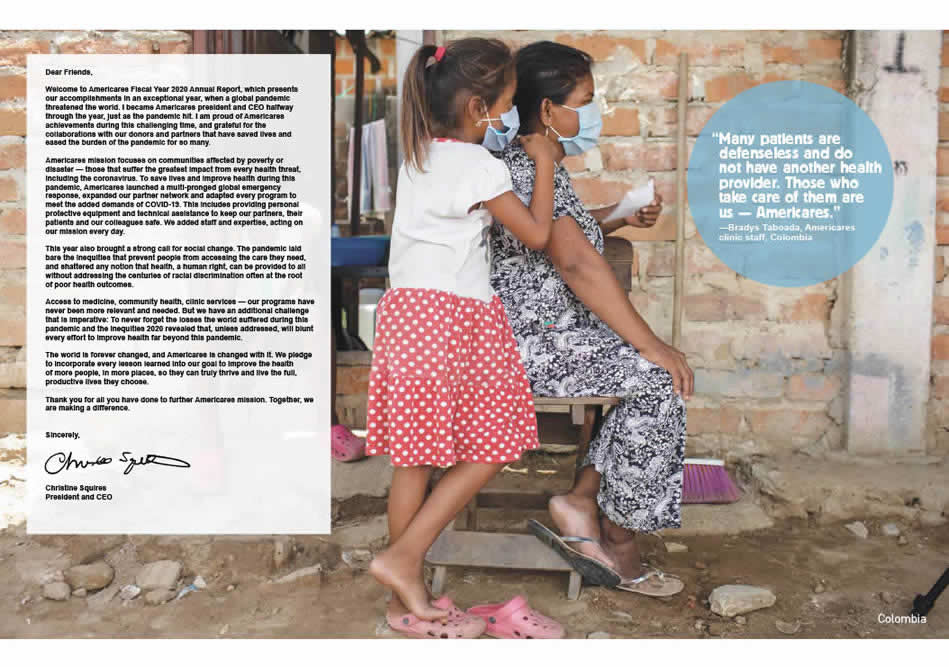
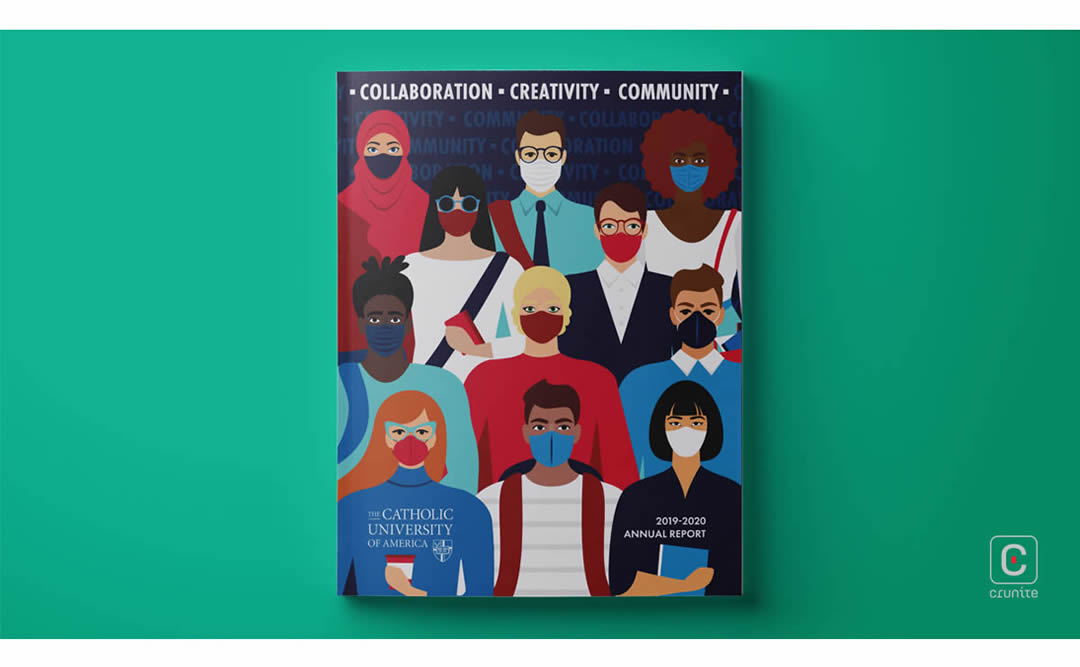
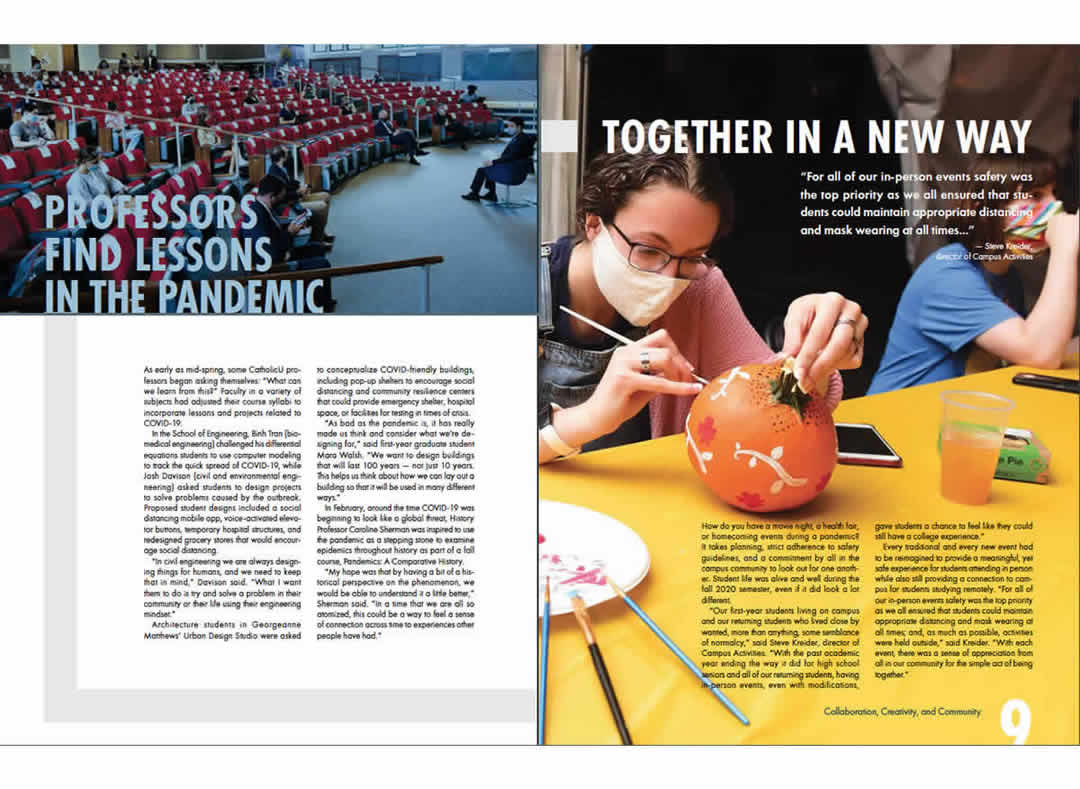
Children feature widely on the covers. In most cases they are portrayed alone, making eye contact with the viewer. Often, the children are smiling and kids’ masks have the added benefit of cute illustrations or smiles painted on. Oddly, when children appear with adults, they often appear with a single parent.
Another recurrent theme is the use of uncomplicated backgrounds. Reports using photography on the cover are far more likely to use simple backgrounds, speaking to the difficulty of working in photography during 2020. One particularly vibrant exception is the International Science Council’s report that cleverly combines photography and illustration.
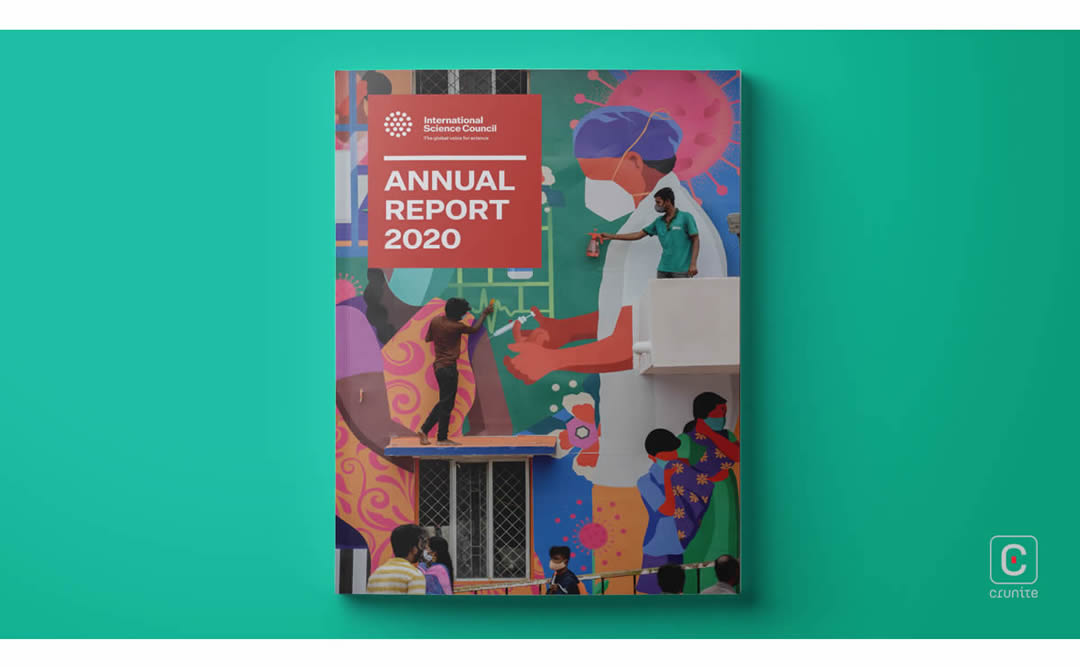
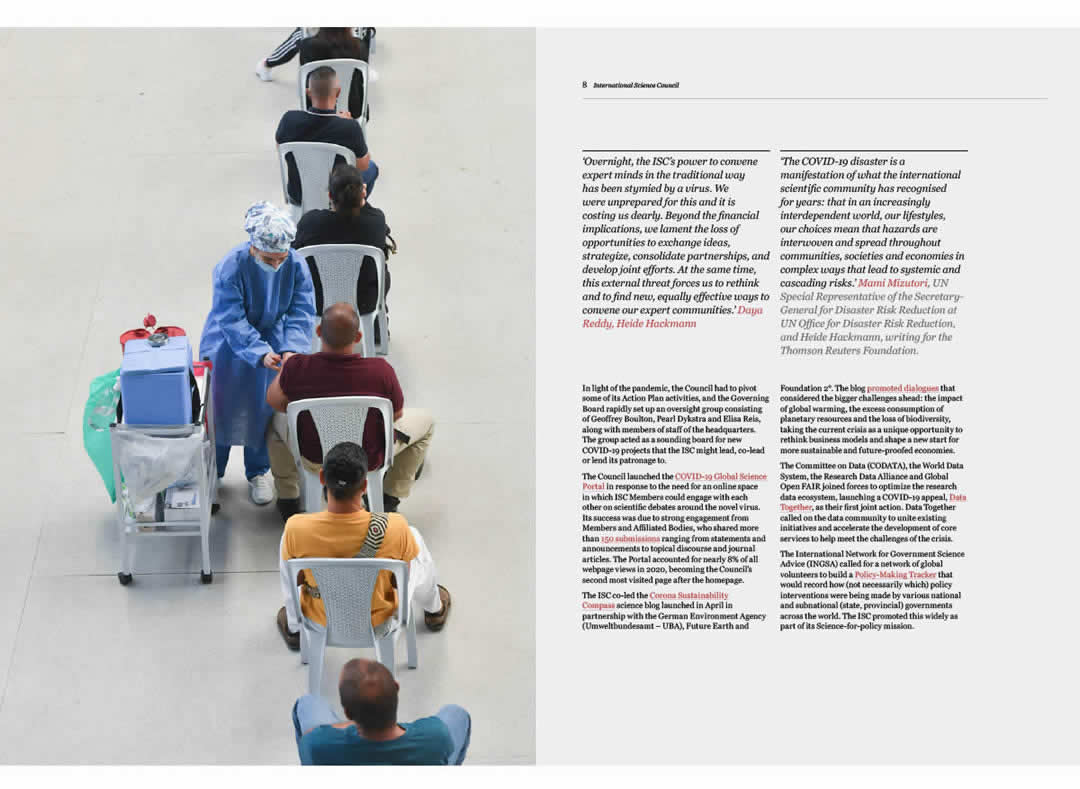
About a third of the reports use illustrated covers. Here, again, we see masked people and there are many simple backgrounds, starkly foregrounding the subject. One unusual approach is that taken by MBI (Monticello Bankshares Inc.), where the mask draws attention to itself only subtlety. MBI is also a rare example of a report that uses a limited palette, the other striking example being Magnit, which makes use of the palette and iconography of early-20th Century Russian propaganda posters.
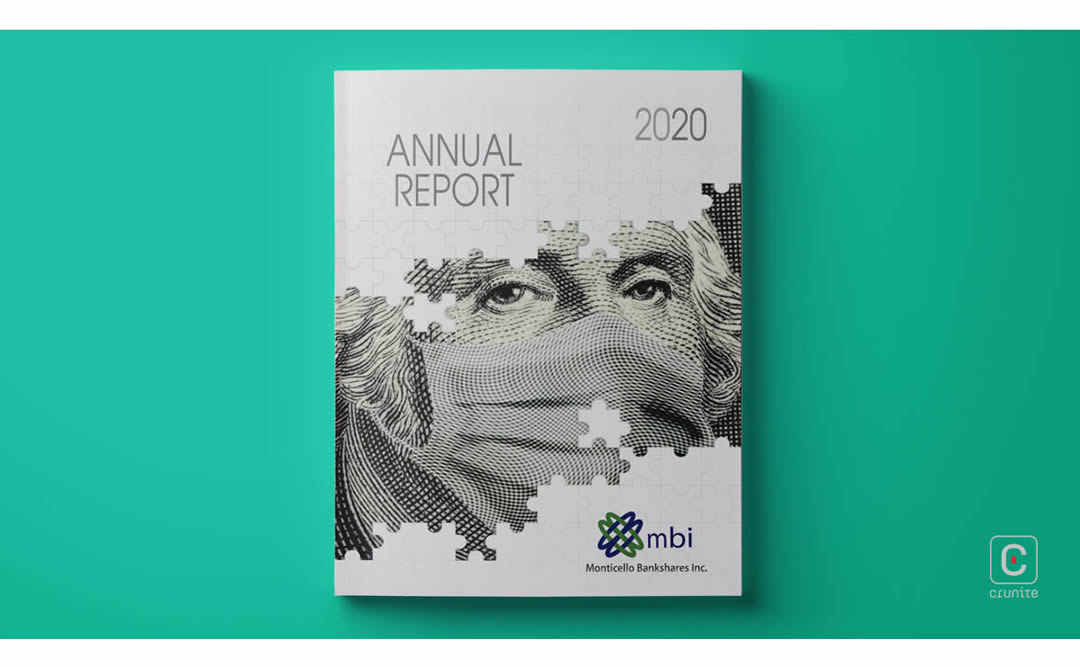
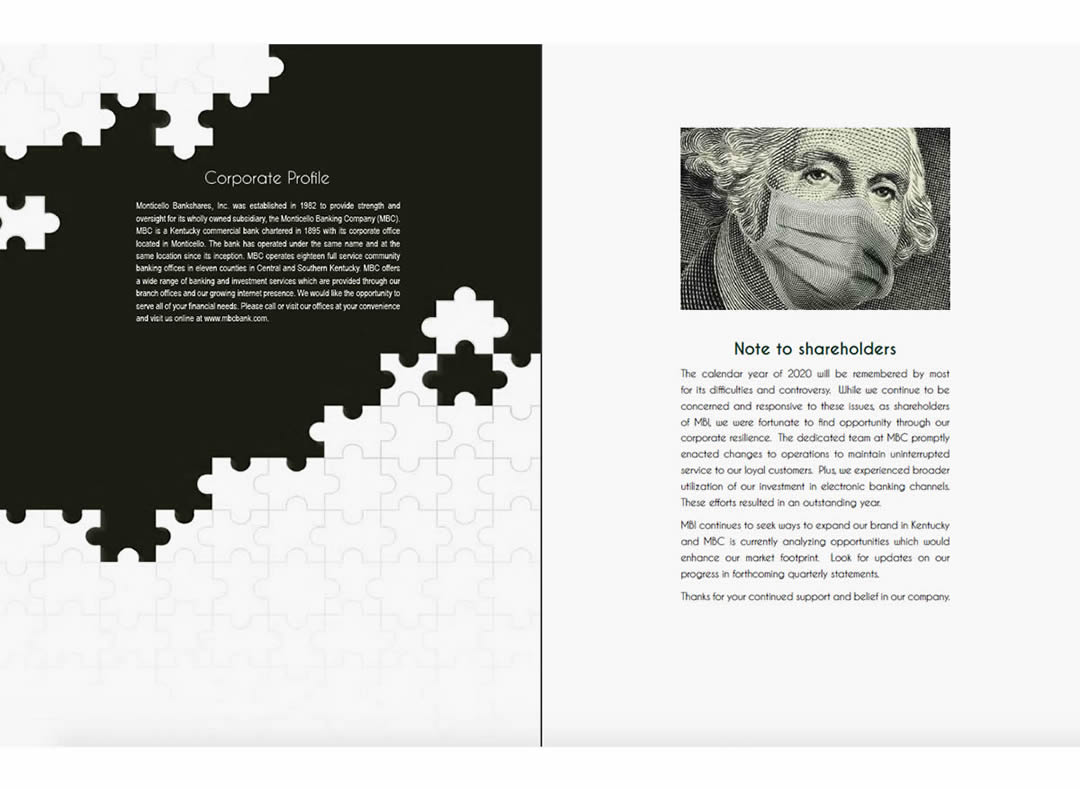
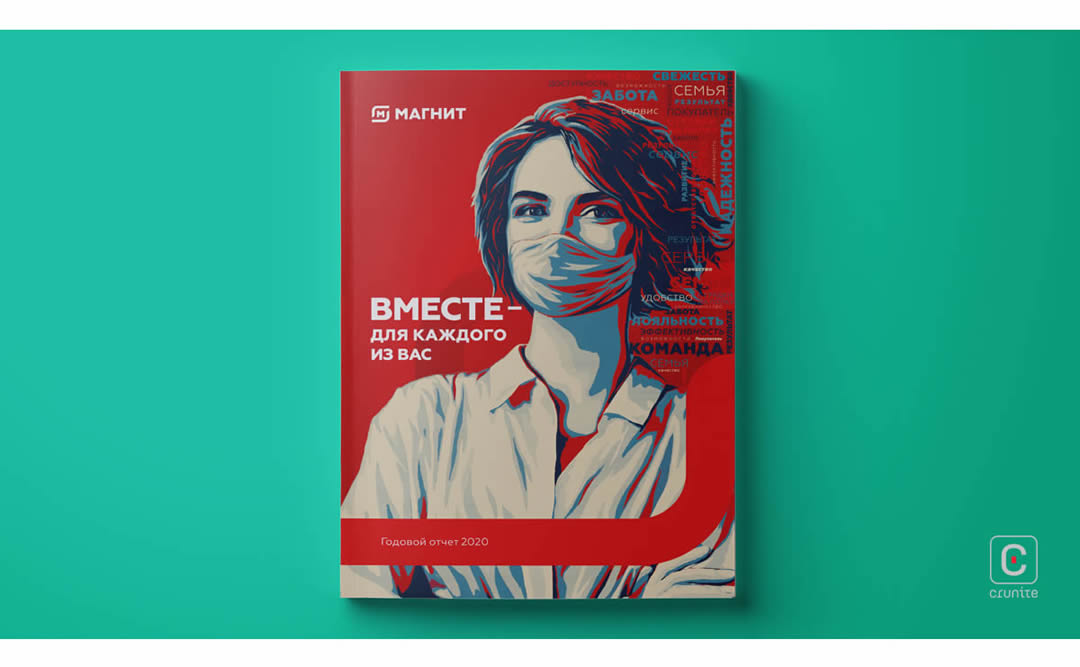
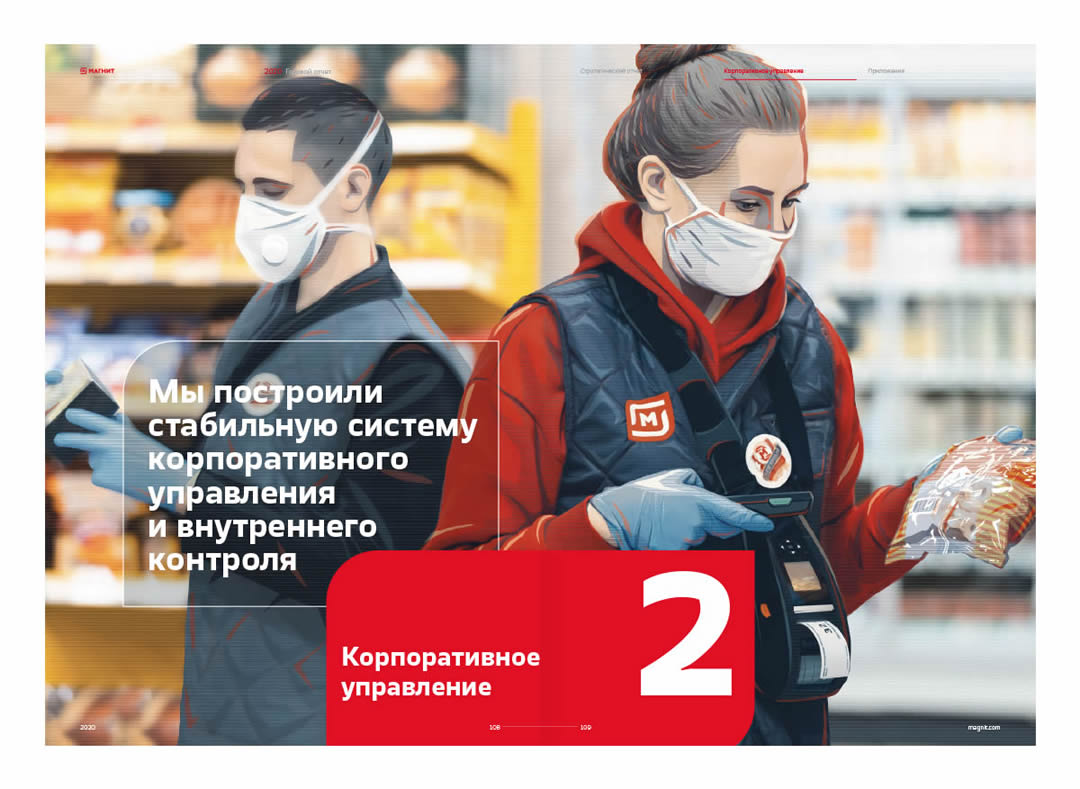
The cover of Australia’s NAVA (National Association for the Visual Arts) comes completely out of leftfield and captures the organization’s work as well as the pandemic year. Colour, textile design, and the posture of the model combine to create a bizarre, striking image.
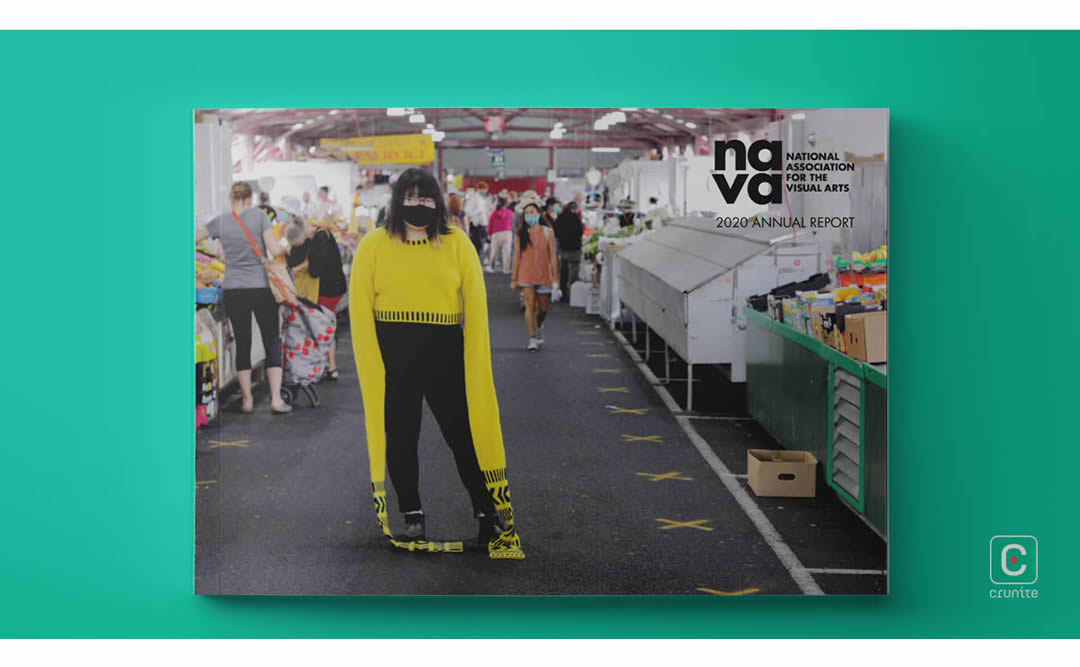
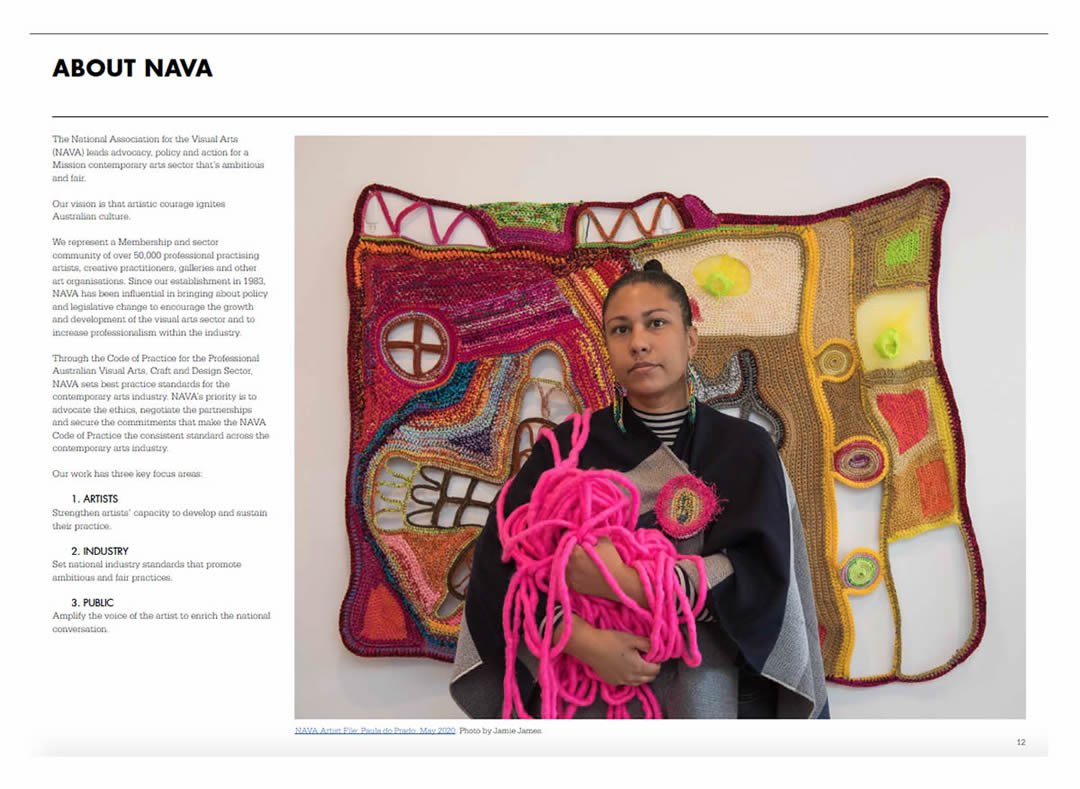
Another unusual entry is IWGIA (International Work Group for Indigenous Affairs), which depicts hand-washing, rather than a mask as its central design element in addressing the pandemic.
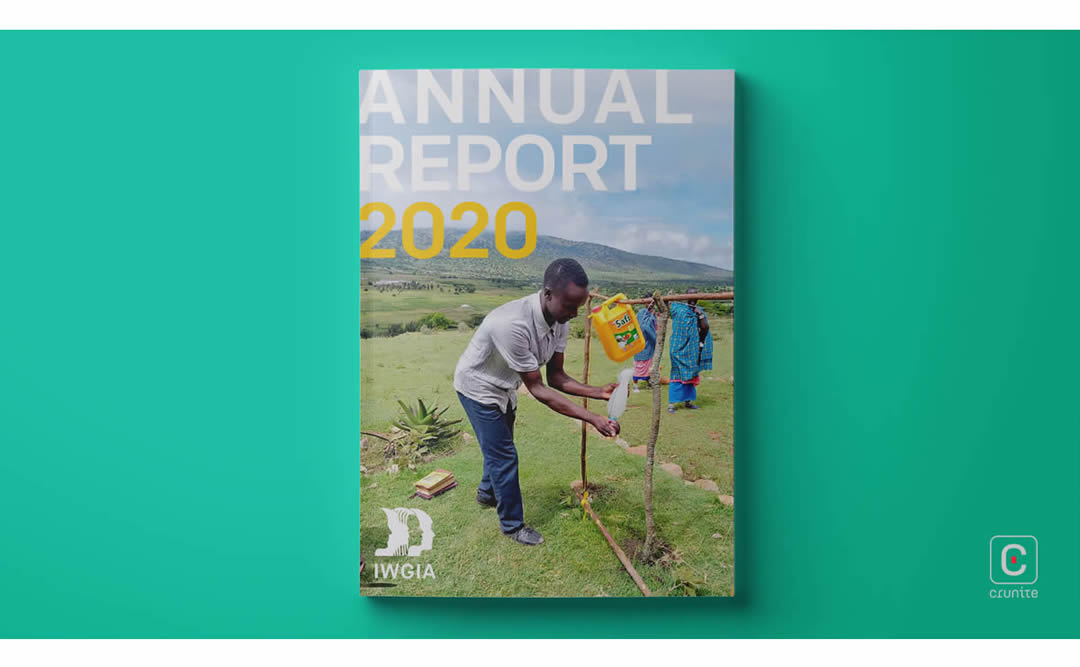
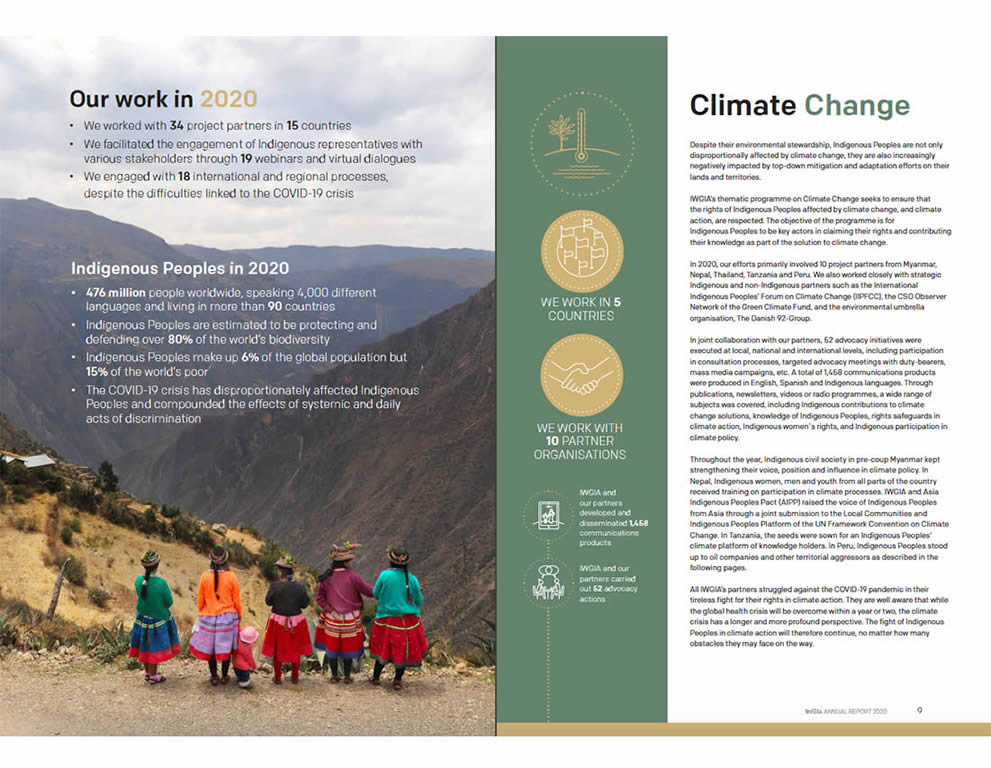
The TEPHINET cover is startling in its use of an infrared temperature monitor aimed at the viewer. These machines were rolled out slowly in most countries, but the depiction of the monitor is not surprising here, given that TEPHINET is the ‘Training Programs in Epidemiology and Public Health Interventions Network’. Here, also, the person in the image and the composition of the picture engage the viewer directly.

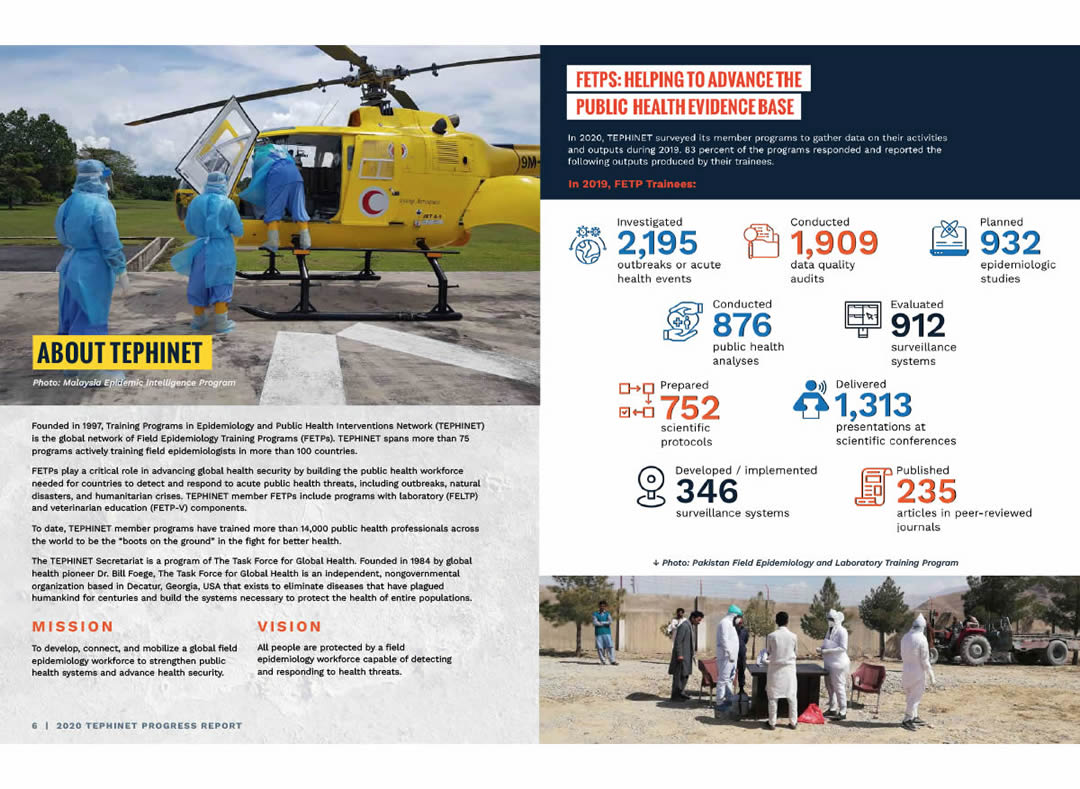
The Cairo Institute is notable as well, for its elegant, frightening cover image, which succeeds in combining the iconography of human rights violations, as well as the pandemic.
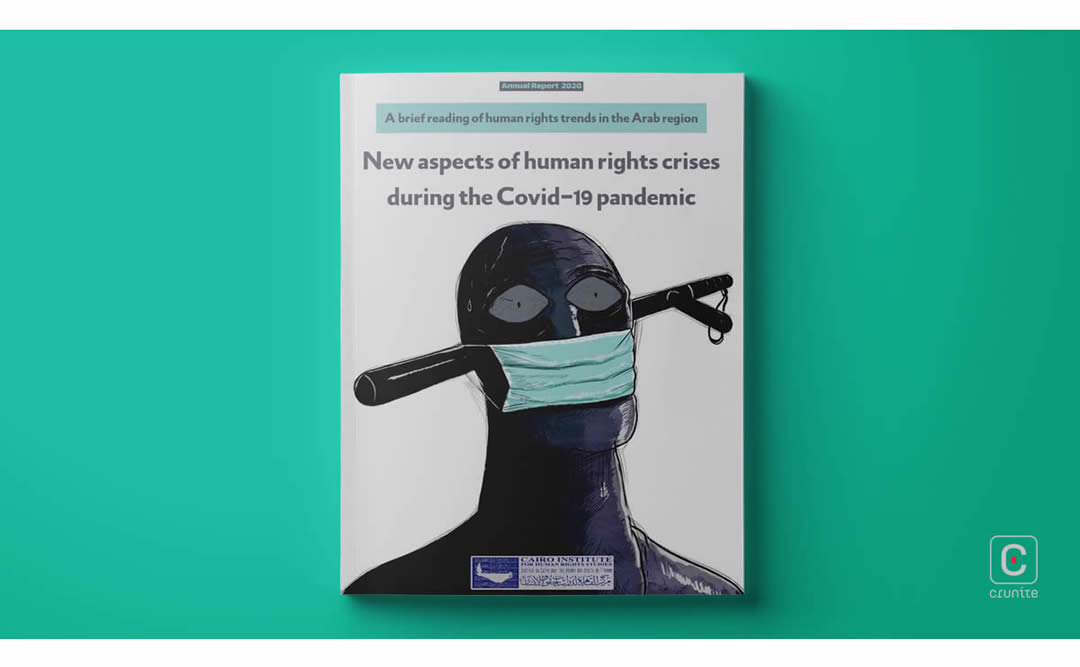
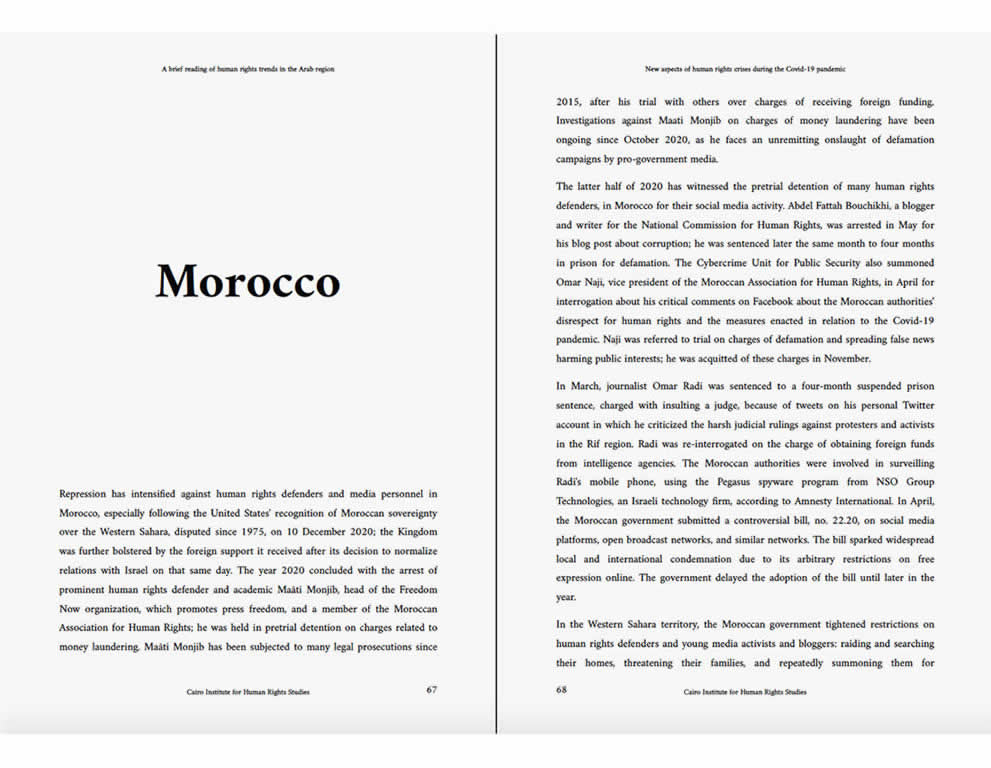
The prevalence of mask-as-motif and the range of emotions skewing to the negative is a reasonable start to companies addressing the pandemic. It remains to be seen how these visual strategies will develop in the years to come, as the pandemic becomes part of humanity’s psychological landscape.
Back
